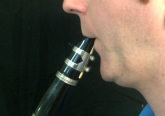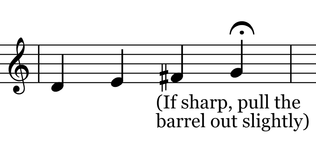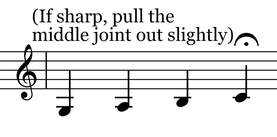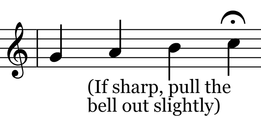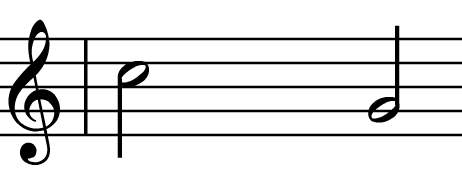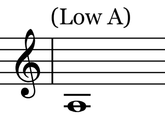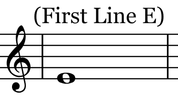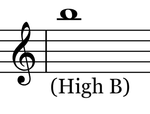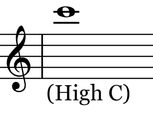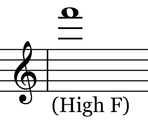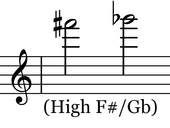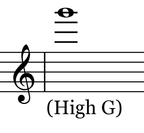DISCLAIMER: The quality of equipment (instrument, reed, mouthpiece, ligature) has a very big impact on intonation. If the equipment is not in working order, the information and techniques on this webpage will not be as effective.
Embouchure Check!Your embouchure formation can either help or hurt your pitch accuracy. Here is a brief reminder about how you should form your embouchure:
|
Tuning the Mouthpiece and Barrel
|
How To Tune the Clarinet
Once you have reviewed and practiced your embouchure formation, tune your clarinet using the procedure listed below:
1) Play your clarinet for a few minutes to warm up your embouchure muscles and the instrument.
How To Adjust Pitch While Playing The Clarinet
Even after tuning our instrument, there will still be notes that are naturally out-of-tune for various reasons. This makes it necessary for us to adjust, or manipulate, the pitch while playing. Here are some simple ways to adjust pitch:
Embouchure Tension/Vowels
|
Alternate Fingerings/Resonance Fingerings
|
Other Factors Effecting Clarinet Pitch
Temperature
Breath Support/Posture
|
Pads and Keys
The Reed
|
Dynamics
|
Pitch Tendencies
Every instrument has notes that are naturally out of tune. Here is a list of common naturally out-of-tune notes for the clarinet. These notes are the written notes for the instrument, not the sounding concert pitches:
Alternate Fingerings
Listed below are alternate fingerings for many of the naturally out-of-tune notes on the clarinet. This is not a complete list, however, these fingerings will be helpful.
Clarinet Intonation Videos
|
|
|
Other Clarinet Resources
|
|
